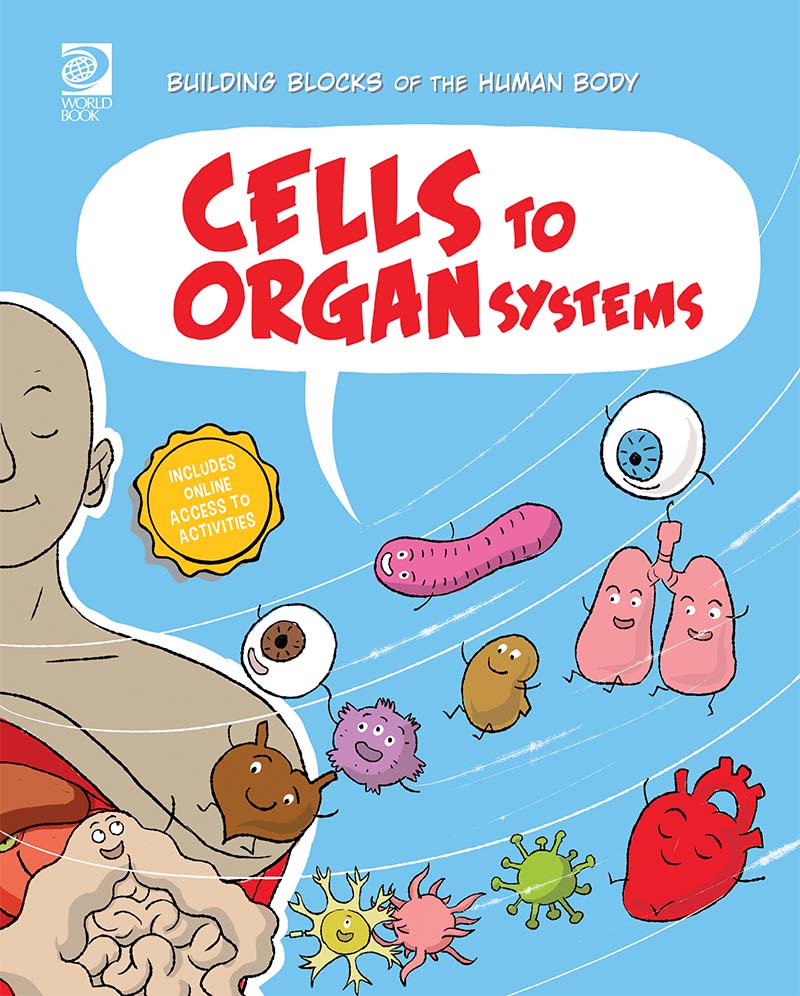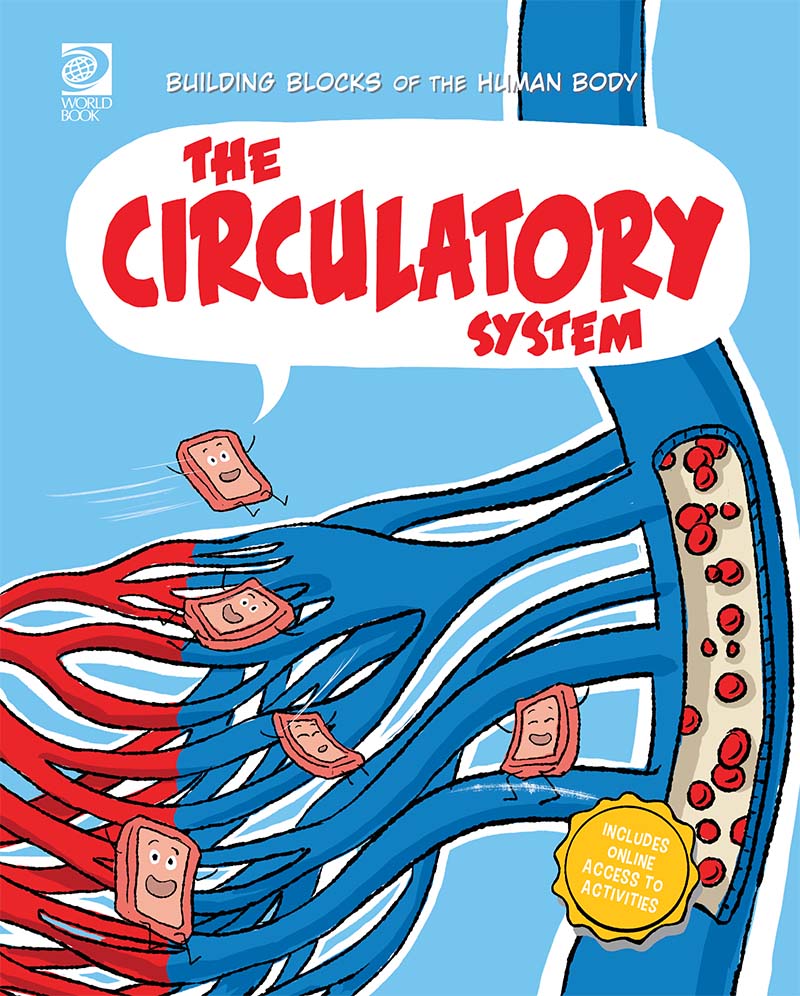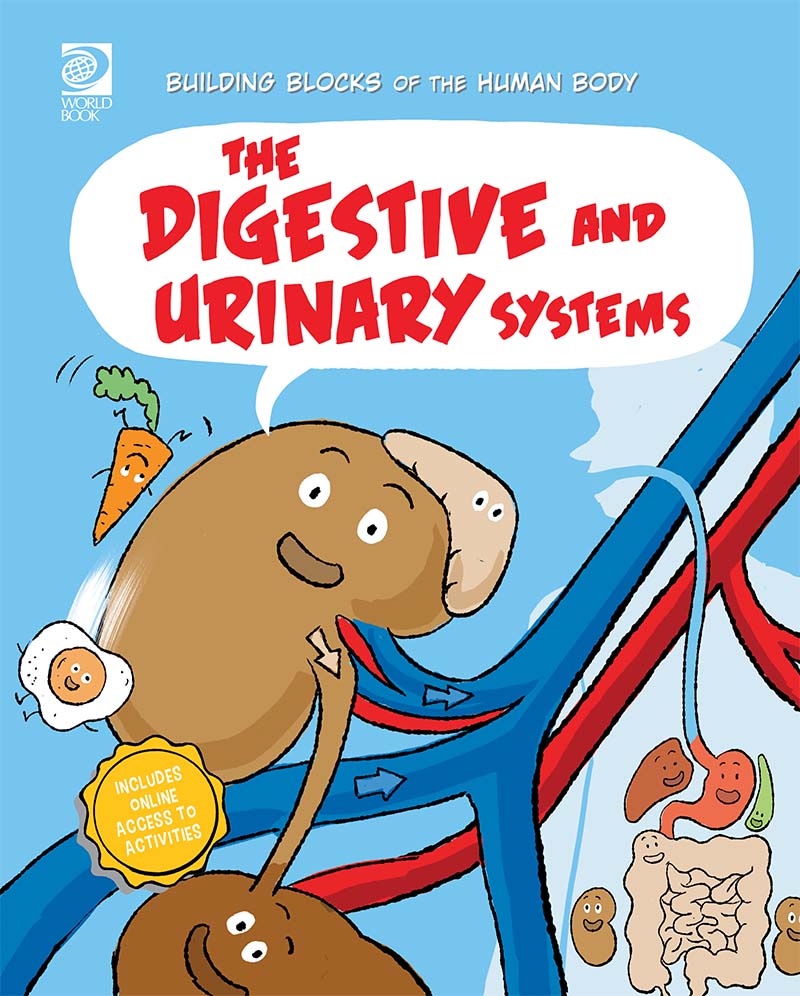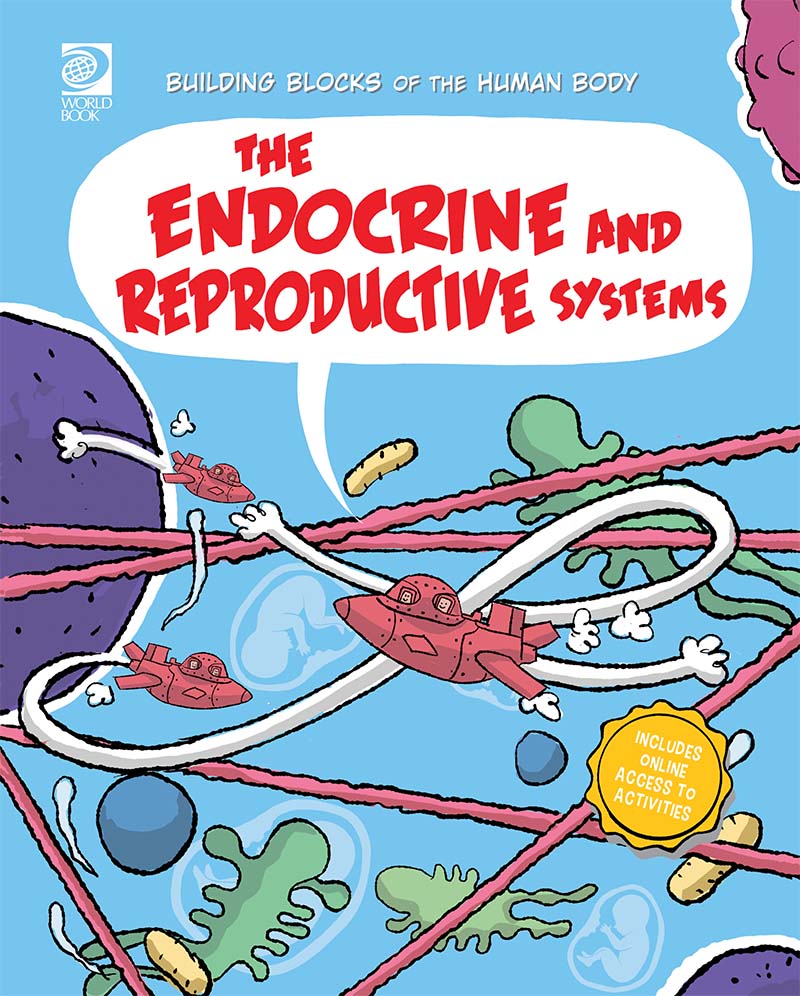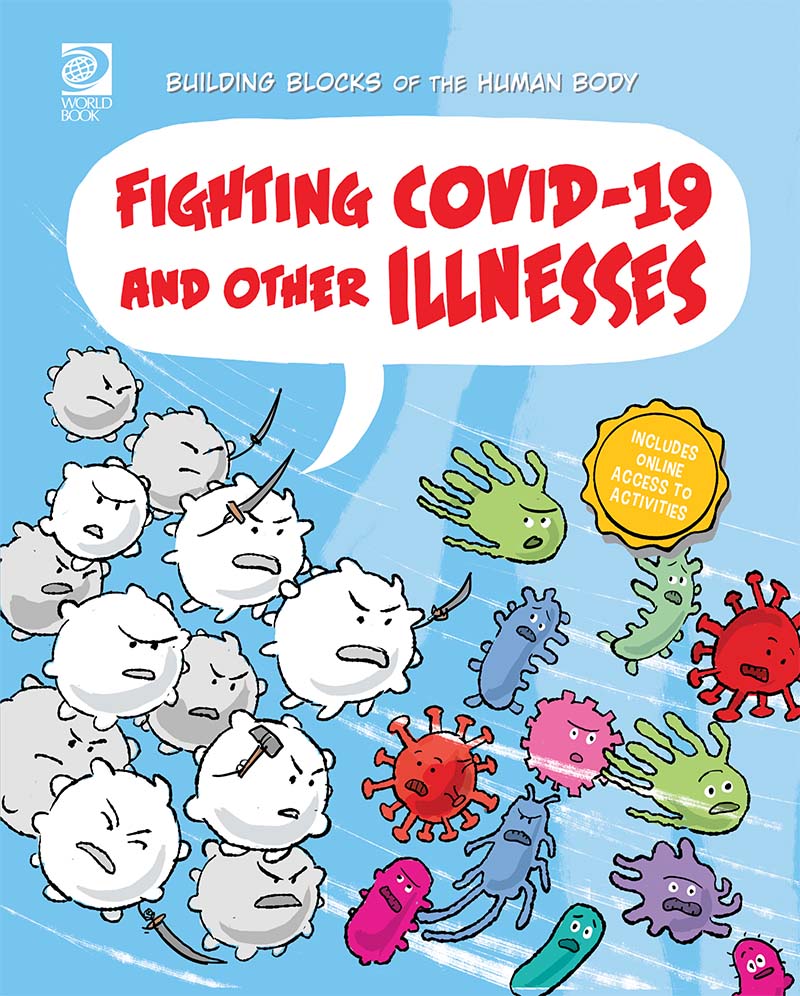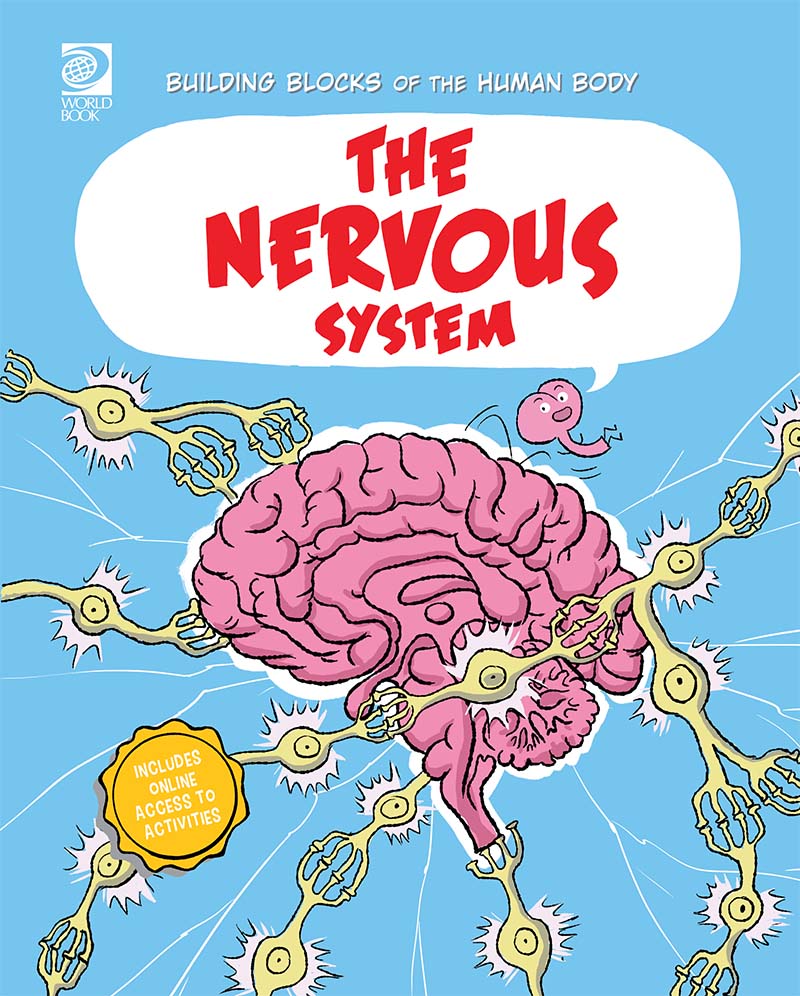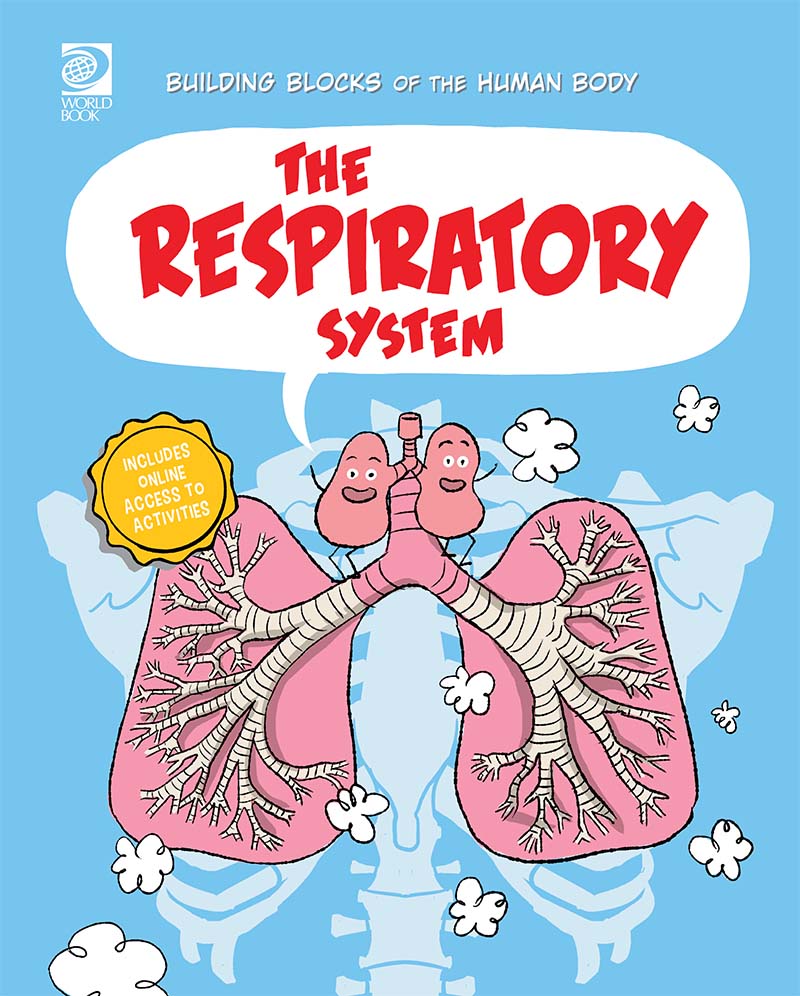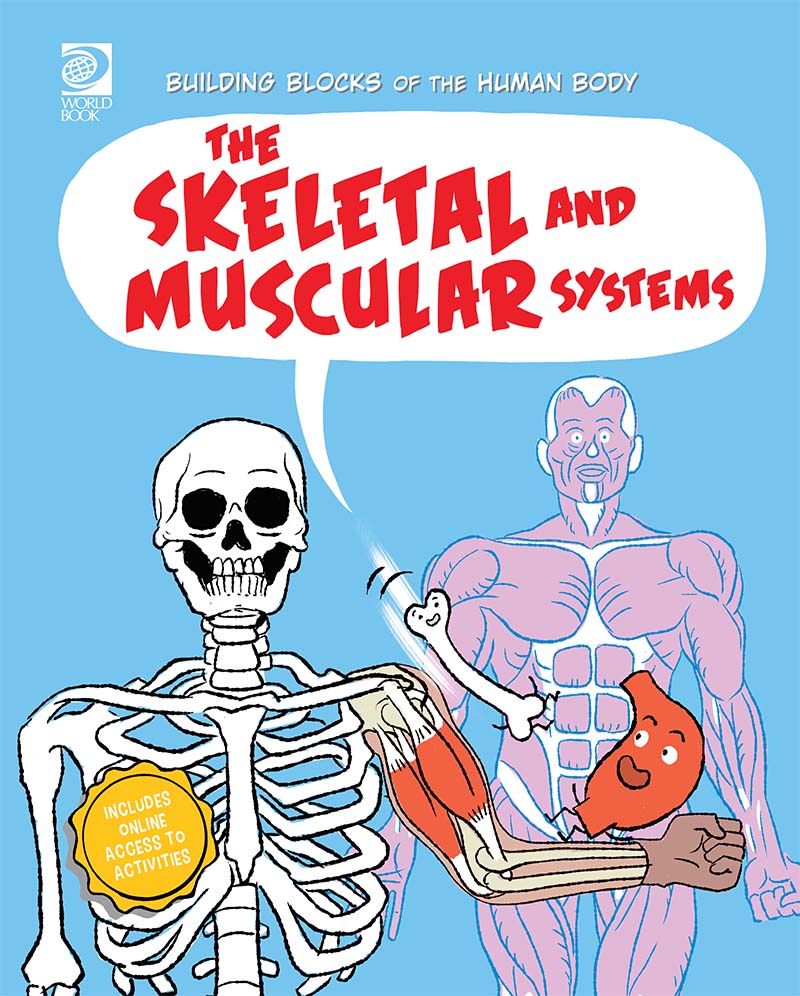Building Blocks of the Human Body
The Building Blocks of the Human Body Educator Section includes tools as well as ready-to-use classroom materials. Educators can see how the Next Generation Science Standards, the CDC National Health Education Standards, and the Grade Shape American National Sex Education Standards align with the Building Blocks of the Human Body books, organized by the grade level(s) they teach. In addition, educators will have access to reading resources such as discussion guides and comprehension checks as well as fun classroom activities! The Educators Section will also include engaging lessons, centered around standards, with built-in differentiation options to support all learners as they continue to explore this content.
Building Blocks of the Human Body Standards Alignment
Use this section to view how the Next Generation Science Standards, the CDC National Health Education Standards, and the Grade Shape American National Sex Education Standards align to the Building Blocks of the Human Body series.
Next Generation Science Standards
-
3rd Grade students who demonstrate understanding can:
Domain and Disciplinary Core Idea Performance Expectation Building Blocks Book(s) 3-LS3. Heredity: Inheritance and Variation of Traits 3-LS3-1. Analyze and interpret data to provide evidence that plants and animals have traits inherited from parents and that variation of these traits exists in a group of similar organisms. Cells to Organ Systems, The Endocrine and Reproductive Systems -
4th Grade students who demonstrate understanding can:
Domain and Disciplinary Core Idea Performance Expectation Building Blocks Book(s) 4-LS1. From Molecules to Organisms: Structures and Processes 4-LS1-1. Construct an argument that plants and animals have internal and external structures that function to support survival, growth, behavior, and reproduction. Cells to Organ Systems, The Circulatory System, The Digestive and Urinary Systems, The Endocrine and Reproductive Systems, Fighting COVID-19 and Other Illnesses, The Nervous System, The Respiratory System, The Skeletal and Muscular Systems 4-LS1-2. Use a model to describe that animals receive different types of information through their senses, process the information in their brain, and respond to the information in different ways. Cells to Organ Systems, The Circulatory System, The Digestive and Urinary Systems, The Endocrine and Reproductive Systems, Fighting COVID-19 and Other Illnesses, The Nervous System, The Respiratory System, The Skeletal and Muscular Systems -
Middle School students who demonstrate understanding can:
Domain and Disciplinary Core Idea Performance Expectation Building Blocks Book(s) MS-LS1. From Molecules to Organisms: Structures and Processes MS-LS1-1. Conduct an investigation to provide evidence that living things are made of cells; either one cell or many different numbers and types of cells. Cells to Organ Systems, The Circulatory System, The Digestive and Urinary Systems, The Endocrine and Reproductive Systems, Fighting COVID-19 and Other Illnesses, The Nervous System, The Respiratory System, The Skeletal and Muscular Systems MS-LS1-2. Develop and use a model to describe the function of a cell as a whole and ways parts of cells contribute to the function. Cells to Organ Systems, The Circulatory System, The Digestive and Urinary Systems, The Endocrine and Reproductive Systems, Fighting COVID-19 and Other Illnesses, The Nervous System, The Respiratory System, The Skeletal and Muscular Systems MS-LS1-3. Use argument supported by evidence for how the body is a system of interacting subsystems composed of groups of cells. Cells to Organ Systems, The Circulatory System, The Digestive and Urinary Systems, The Endocrine and Reproductive Systems, Fighting COVID-19 and Other Illnesses, The Nervous System, The Respiratory System, The Skeletal and Muscular Systems
CDC National Health Education Standards
-
3rd - 5th Grade students who demonstrate understanding can:
Anchor Standard Performance Expectation Building Blocks Book(s) Standard 1. Students will comprehend concepts related to health promotion and disease prevention to enhance health. 1.5.1. Describe the relationship between healthy behaviors and personal health. Cells to Organ Systems, The Circulatory System, The Digestive and Urinary Systems, The Endocrine and Reproductive Systems, Fighting COVID-19 and Other Illnesses, The Nervous System, The Respiratory System, The Skeletal and Muscular Systems 1.5.2. Identify examples of emotional, intellectual, physical, and social health. Cells to Organ Systems, The Circulatory System, The Digestive and Urinary Systems, The Endocrine and Reproductive Systems, Fighting COVID-19 and Other Illnesses, The Nervous System, The Respiratory System, The Skeletal and Muscular Systems 1.5.4. Describe ways to prevent common childhood injuries and health problems. Fighting COVID-19 and Other Illnesses Standard 5. Students will demonstrate the ability to use decision-making skills to enhance health. 5.5.1. Identify health-related situations that might require a thoughtful decision. Fighting COVID-19 and Other Illnesses 5.5.3. List healthy options to health-related issues or problems. Cells to Organ Systems, The Circulatory System, The Digestive and Urinary Systems, The Endocrine and Reproductive Systems, Fighting COVID-19 and Other Illnesses, The Nervous System, The Respiratory System, The Skeletal and Muscular Systems 5.5.6. Describe the outcomes of a health-related decision. Cells to Organ Systems, The Circulatory System, The Digestive and Urinary Systems, The Endocrine and Reproductive Systems, Fighting COVID-19 and Other Illnesses, The Nervous System, The Respiratory System, The Skeletal and Muscular Systems -
6th - 8th Grade students who demonstrate understanding can:
Anchor Standard Performance Expectation Building Blocks Book(s) Standard 1. Students will comprehend concepts related to health promotion and disease prevention to enhance health. 1.8.1. Analyze the relationship between healthy behaviors and personal health. Cells to Organ Systems, The Circulatory System, The Digestive and Urinary Systems, The Endocrine and Reproductive Systems, Fighting COVID-19 and Other Illnesses, The Nervous System, The Respiratory System, The Skeletal and Muscular Systems 1.8.2. Describe the interrelationships of emotional, intellectual, physical, and social health in adolescence. Cells to Organ Systems, The Circulatory System, The Digestive and Urinary Systems, The Endocrine and Reproductive Systems, Fighting COVID-19 and Other Illnesses, The Nervous System, The Respiratory System, The Skeletal and Muscular Systems 1.8.5. Describe ways to reduce or prevent injuries and other adolescent health problems. Fighting COVID-19 and Other Illnesses 1.8.6. Explain how appropriate health care can promote personal health. Cells to Organ Systems, The Circulatory System, The Digestive and Urinary Systems, The Endocrine and Reproductive Systems, Fighting COVID-19 and Other Illnesses, The Nervous System, The Respiratory System, The Skeletal and Muscular Systems 1.8.7. Describe the benefits of and barriers to practicing healthy behaviors. Cells to Organ Systems, The Circulatory System, The Digestive and Urinary Systems, The Endocrine and Reproductive Systems, Fighting COVID-19 and Other Illnesses, The Nervous System, The Respiratory System, The Skeletal and Muscular Systems Standard 5. Students will demonstrate the ability to use decision-making skills to enhance health. 5.8.1. Identify circumstances that can help or hinder healthy decision making. Fighting COVID-19 and Other Illnesses 5.8.2. Determine when health-related situations require the application of a thoughtful decision-making process. Cells to Organ Systems, The Circulatory System, The Digestive and Urinary Systems, The Endocrine and Reproductive Systems, Fighting COVID-19 and Other Illnesses, The Nervous System, The Respiratory System, The Skeletal and Muscular Systems 5.8.7. Analyze the outcomes of a health-related decision. Cells to Organ Systems, The Circulatory System, The Digestive and Urinary Systems, The Endocrine and Reproductive Systems, Fighting COVID-19 and Other Illnesses, The Nervous System, The Respiratory System, The Skeletal and Muscular Systems
Shape America National Sex Education Standards
-
By the end of the 5th grade, students should be able to:
Topic Strand Standard Building Blocks Book(s) Anatomy and Physiology AP.5.CC.1. Recall the human reproductive systems, including the external and internal body parts and their functions, and that there are natural variations in human bodies. The Endocrine and Reproductive Systems Puberty and Adolescent Sexual Development PD.5.CC.1. Explain the physical, social, and emotional changes that occur during puberty and adolescence and how the onset and progression of puberty can vary. The Endocrine and Reproductive Systems PD.5.CC.2. Describe how puberty prepares human bodies for the potential to reproduce and that some healthy people have conditions that impact the ability to reproduce. The Endocrine and Reproductive Systems -
By the end of the 8th grade, students should be able to:
Topic Strand Standard Building Blocks Book(s) Anatomy and Physiology AP.8.CC.1. Describe human reproductive systems, including the external and internal body parts and their functions, and that there are naturally occurring variations in human bodies. The Endocrine and Reproductive Systems Puberty and Adolescent Sexual Development PD.8.AI.1. Define medical accuracy and analyze medically accurate sources of information about puberty, adolescent development, and sexual health. The Endocrine and Reproductive Systems
Reading Resources
Each book in the Building Blocks of the Human Body series comes with a Discussion Guide as well as a Comprehension Check! Each Discussion Guide includes 10 questions and is intended to be used during or after reading the text to help students better understand the content. Potential answers are also included. Each Comprehension Check also includes 10 questions and comes with an Answer Key. The Comprehension Check is intended to be used after reading and is a great assessment option.
Classroom Activities
These activities are designed for classroom use and can be used in both the small group and/or whole group setting. These activities bring some fun, engagement, and reflection to students’ learning!
Cells, Tissues, and Organs, Oh My!
In this activity, students will review what they know about cells, tissues, organs, and body systems to discuss how all these components work together to perform specific functions.
Follow the Digestive System
Here, students will work in pairs to identify major structures found within the digestive system. They will apply their knowledge and collaborate to determine how food travels through our bodies.
Breathe In, Breathe Out
In this activity, students will collaborate to identify major structures found within the respiratory system. They will also determine how oxygen travels through this system to support the rest of the body.
Lesson Plans
World Book has created lesson plans that can be used to help deepen students’ understanding of the Building Blocks of the Human Body concepts. These full lesson plans are aligned to standards, include assessment options, describe possible differentiation considerations, and include a variety of ways for students to stay engaged in their learning. Many materials are included as quick and easy downloads for your convenience.
Body Systems Jigsaw
This cooperative lesson is designed for students in grades 4-8. Students will use the jigsaw strategy to read about the 10 human body systems. Students will become an expert on two systems and then share their knowledge with their peers to collect information about all the systems. Finally, students will use their notes and knowledge to complete a brief assessment about the major functions of each of the 10 body systems.
A Heart-y Investigation
In this lesson, students in grades 4-8 will read and write informational text about the heart and circulatory system. Students will trace the path blood takes through the heart and other structures of the circulatory system to distribute oxygen, nutrients, and other needed substances to cells and to get rid of carbon dioxide and other wastes.
